From Wikipedia:
David Fotheringham McCallum (26 March 1897 – 21 March 1972) was the Scottish leader (principal first violinist) of the Royal Philharmonic Orchestra, the London Philharmonic Orchestra, and the Scottish National Orchestra. He was also the father of actor David McCallum and of author Iain McCallum. […]
During World War II, McCallum led the National Symphony Orchestra and played with the London Studio Players and the BBC’s Overseas Music Unit. After the war, McCallum rejoined Beecham, this time as leader of the Royal Philharmonic Orchestra. On the First American Tour of the Royal Philharmonic Orchestra in 1950, Beecham fell ill. McCallum stood in as conductor, and his stint on the conductor’s podium earned positive reviews.
He had several small roles in films. His hands are seen playing the violin for Stewart Granger in an uncredited role in The Magic Bow (1946). He played the blind fiddler in the film Last Holiday (1950), which starred Alec Guinness. He also appeared as himself in “Prelude to Fame”.
In 1967, McCallum was one of 40 musicians assembled to perform on the Beatles’ track “A Day in the Life“. From 1961 to 1971, he was leader of Annunzio Mantovani’s orchestra. At this time, his son David McCallum Jr. was at the height of his fame, prompting Mantovani to introduce his leader to audiences with the quip, “We can afford the father but not the son!” Indeed, McCallum Sr. played on several tracks arranged and conducted by his son which featured on the Capitol Records LPs Music…A Part of Me and Music…A Bit More of Me released in 1966.
McCallum Sr. died at Arundel in Sussex on 21 March 1972, five days before his 75th birthday.
Guitarist Jimmy Page credits McCallum with giving him the idea of playing his guitar with a violin bow according to MTV’s Led Zeppelin rockumentary. […]
The orchestra overdubs for “A Day In The Life” were recorded on February 10, 1967. The Beatles decided to use a symphony orchestra to fill the 24-bar gap between the two sections of the track. To allay concerns that classically trained musicians would not be able to improvise the section, producer George Martin wrote a loose score for the section. It was an extended, atonal crescendo that encouraged the 40-piece orchestra to improvise within the defined framework.
Paul McCartney had the idea to turn this unconventional session into a sort of happening. The musician were asked to attend in full evening dresses and were given accessories like red false noses, flowery paper spectacles or large gorilla paws…
In addition, the session was filmed for use in a planned television special. But given the BBC’s ban of “A Day In The Life“, because of what they assumed were drug references, the idea was abandoned. In 2015, portions of the film were released in the “A Day in the Life” promotional film, included in the three-disc versions of the Beatles’ 2015 video compilation 1+.
The orchestra and George Martin had been asked to attend in full evening dress, which the Beatles also promised they would wear. The Beatles did not keep their word but the orchestra and George Martin looked very smart in their tuxedos. In order to get them into the mood to play something unconventional and to encourage in them an element of playful spontaneity, the Beatles went among the players handing out party favours. Mal Evans had been sent to a joke shop on Great Russell Street and returned with plastic stick-on nipples, plastic glasses with false eyes, rubber bald pates, some with knotted handkerchiefs balanced on them, huge fake cigars, party hats and streamers: David McCallum, the leader of the London Philharmonic, wore a large red false nose; Erich Gruenberg, the leader of the second violins, had on a pair of flowery paper spectacles and held his bow in a large gorilla paw; the bassoon players, Alfred Waters and N. Fawcett, had balloons attached to their instruments which inflated and deflated with each note, raising a laugh from George Martin.
From “Paul McCartney: Many Years from Now” by Barry Miles, 1997
And if that wasn’t unorthodox enough, they were even more bemused, if not downright aghast, by Paul’s instructions that they all play as out of tune and out of time as possible. This twist was added during the taping of “A Day In The Life”‘s cosmic crescendo, for which Paul had assumed – with obvious relish – the role of “conductor.”
Pete Shotton – From “The Beatles, Lennon, And Me“, 1984
It was quite a chaotic session. Such a big orchestra, playing with very little music. And the Beatle chaps were wandering around with rather expensive cameras, like new toys, photographing everything.
Alan Civil – Horn player – From “The Complete Beatles Recording Sessions” by Mark Lewisohn, 1988
Only the Beatles could have assembled a studio full of musicians, many from the Royal Philharmonic or the London Symphony orchestras, all wearing funny hats, red noses, balloons on their bows and putting up with headphones clipped around their Stradivari violins acting as microphones.
Peter Vince, studio engineer – From “The Complete Beatles Recording Sessions” by Mark Lewisohn, 1988
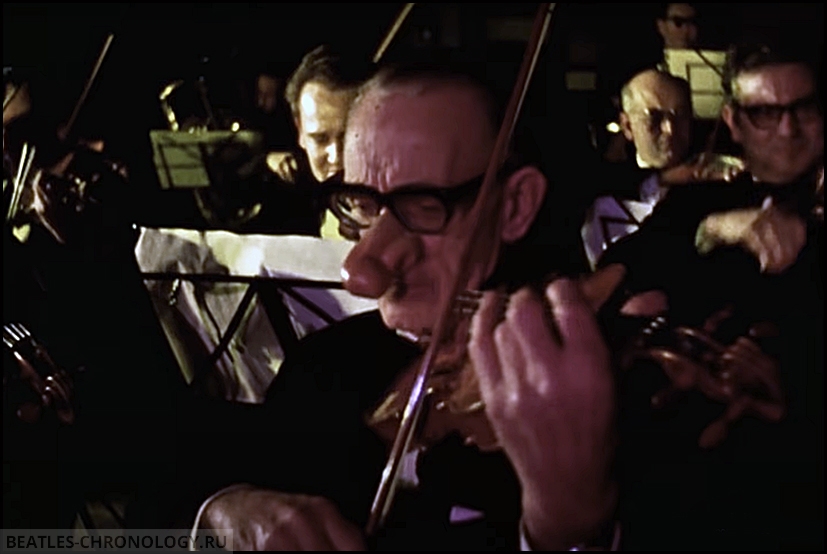
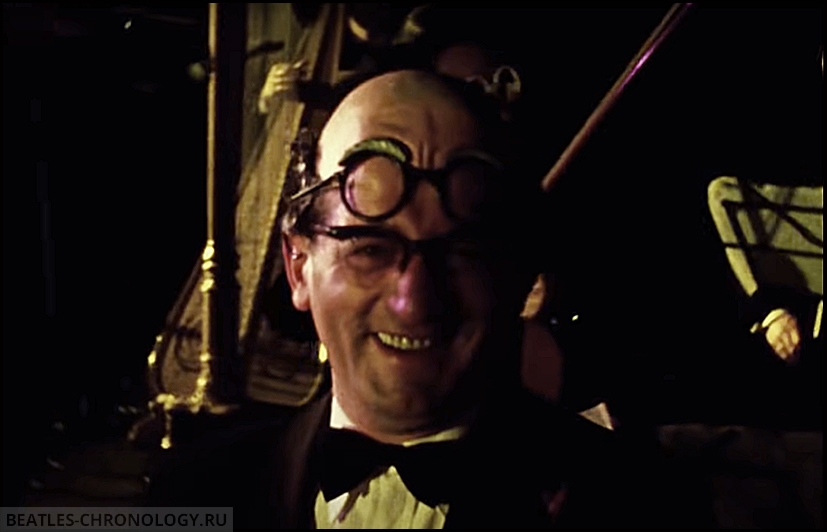
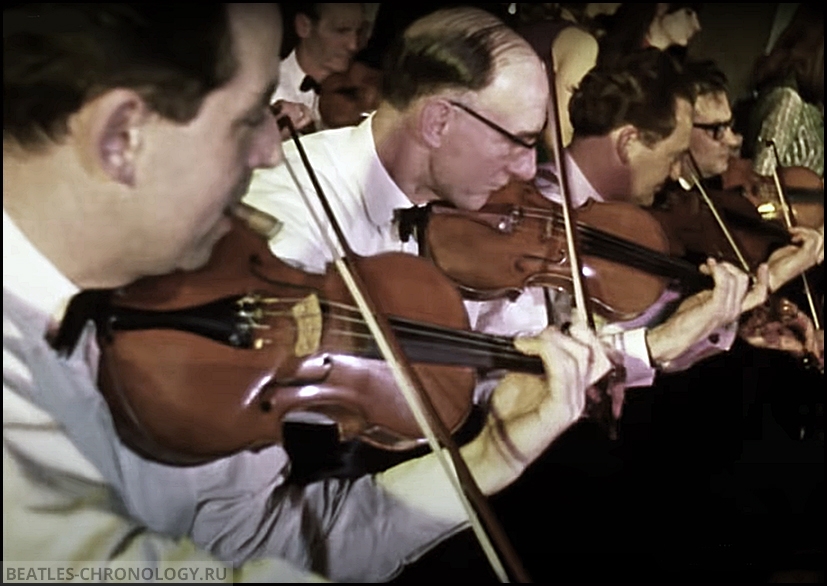
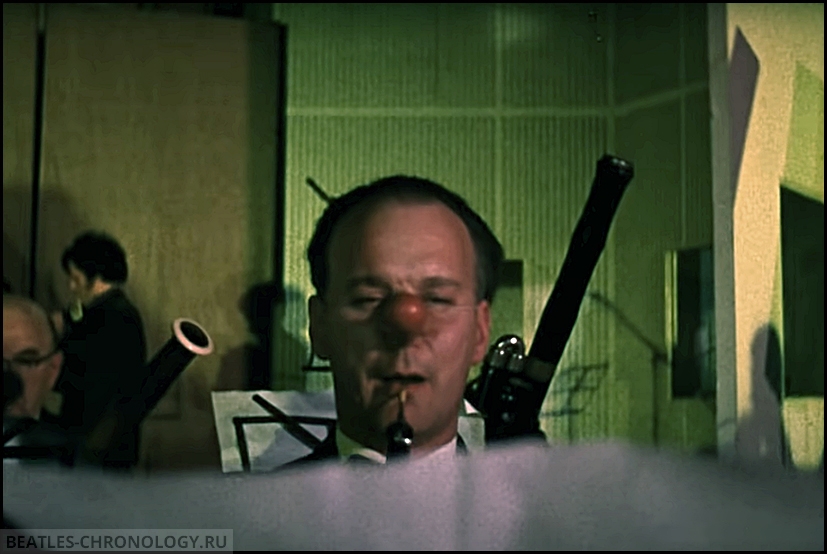
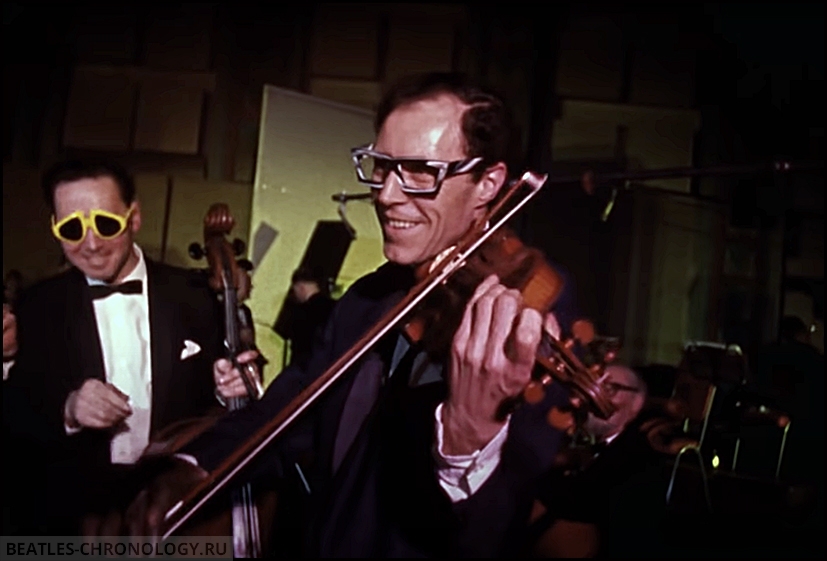
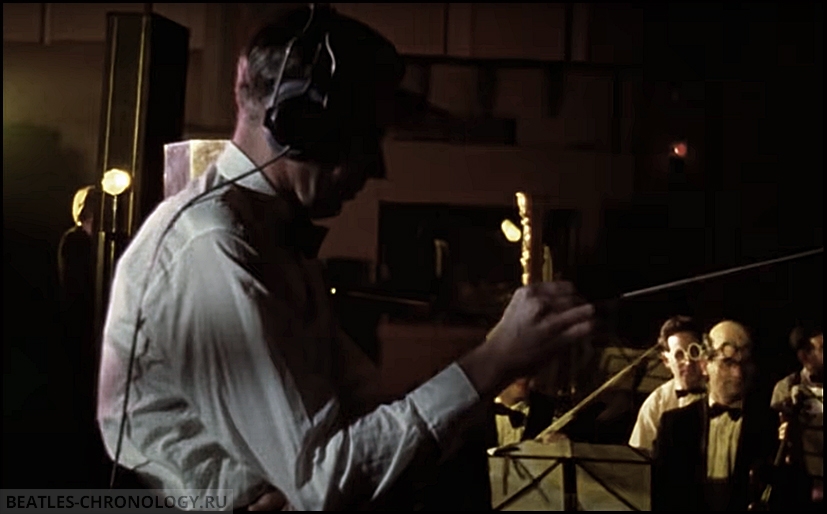
Recording "A Day In The Life" #4
Feb 10, 1967 • Songs recorded during this session appear on Sgt. Pepper's Lonely Hearts Club Band (UK Mono)

Notice any inaccuracies on this page? Have additional insights or ideas for new content? Or just want to share your thoughts? We value your feedback! Please use the form below to get in touch with us.